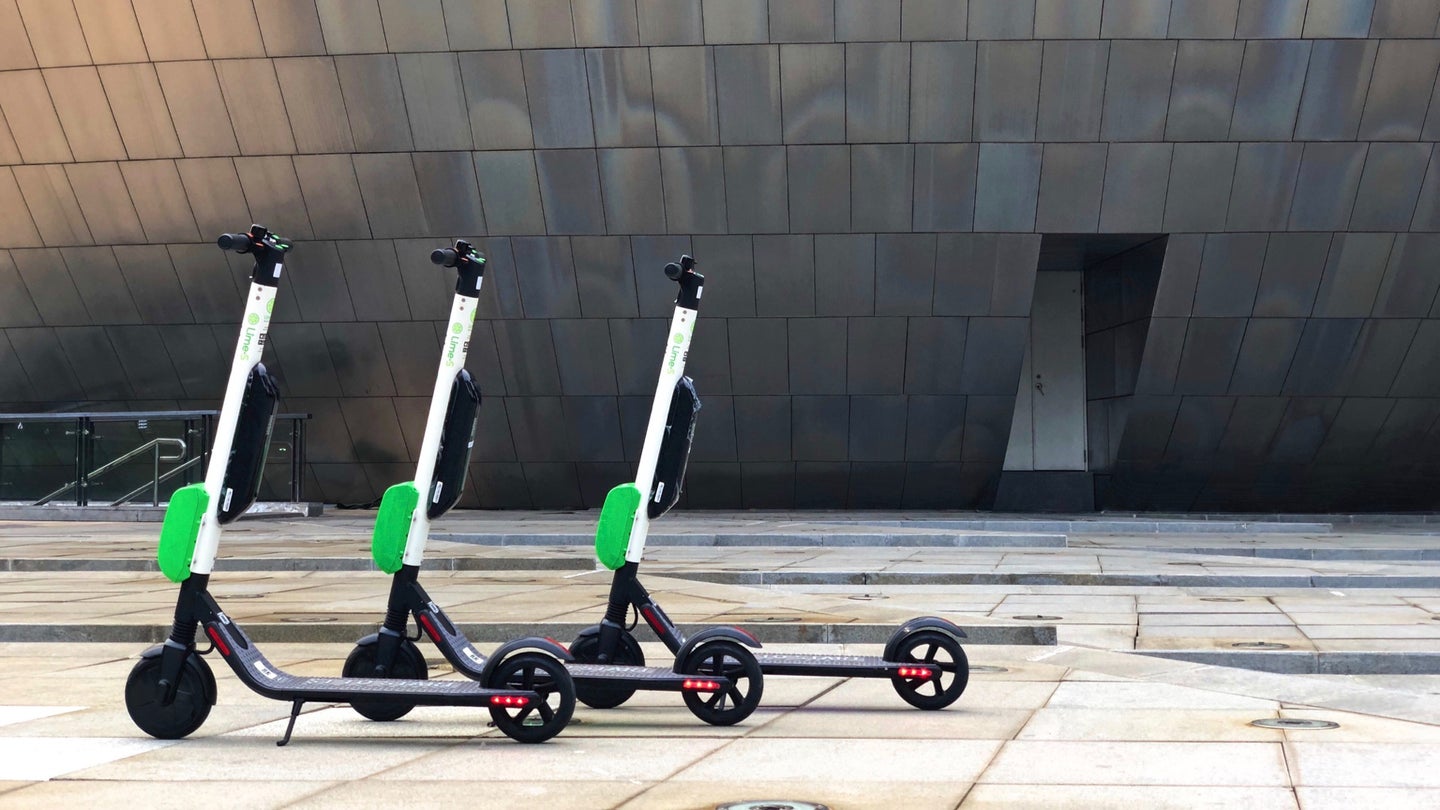Portland Residents Say They’re Replacing Car Trips With More Scooter Rides
The city just released a massive cache of data from a four-month scooter-sharing pilot.

Scooter sharing was one of the most hyped transportation stories of 2018, but now the city of Portland, Oregon is putting some numbers to the phenomenon. The city's Bureau of Transportation released data from a pilot program testifying to scooter-sharing's popularity.
During the four-month pilot, Portland residents took 700,369 trips covering 801,887 miles on 2,043 scooters from three companies: Bird, Lime, and Skip. In a citywide survey conducted by DHM Research, 62 percent of residents surveyed said they viewed scooters positively at the end of the pilot. That sentiment was higher among residents under age 35 (71 percent), people of color (74 percent), and those with annual incomes under $30,000 (66 percent).
Furthermore, 34 percent of Portland residents and 48 percent of visitors surveyed said they used scooters instead of driving a personal car or using a ride-hailing service such as Uber or Lyft. However, only six percent of people surveyed said they actually got rid of cars because of the availability of scooters, while another 16 percent considered it.
The explosion in popularity of shared scooters from companies like Bird and Lime was a boon to investors (Bird and Lime are reportedly each worth $2 billion), but cities were left unprepared for the waves of scooters flooding their streets. To keep things under control, Portland required companies to participate in its four-month pilot under strict rules. The city also removed all scooters from its streets after the pilot ended in November, so officials could analyze data.
Scooter companies didn't always follow the rules. One requirement was for each of the three companies participating in the pilot to deploy 100 scooters in East Portland, a lower-income neighborhood with poor access to public transit, and offer lower fares to residents. But while scooters proved popular with low-income residents (about six percent of rides originated in East Portland), the companies did not meet all of their obligations, according to the New York Times. In addition, scooters often exceeded the speed limit of 15 miles per hour set by the city, the paper reported.
Rider injuries have been another area of controversy for scooter sharing. The data did show that scooter-related injuries rose during the pilot program, but most injuries were not severe. Scooter-related injuries accounted for about five percent of traffic crash emergency room visits during the pilot period, and the Portland Bureau of Transportation said it received 43 reports of collisions during the pilot period.
Portland capped the number of scooters at just over 2,000, divided among the three participating companies. Gabriel Scheer, Lime's director of strategic development, told the New York Times that the cap made it difficult to determine how many scooters were actually needed. But he added that capping the number of scooters forced Lime to refine its operations and focus on deploying scooters where they were likely to attract the most riders.
A second pilot, this time lasting one year, is expected to start in spring, although Portland hasn't said how many scooters will be deployed. The results will likely be scrutinized by investors as well as Uber and Lyft, which are slowly building up their own scooter-sharing operations.
